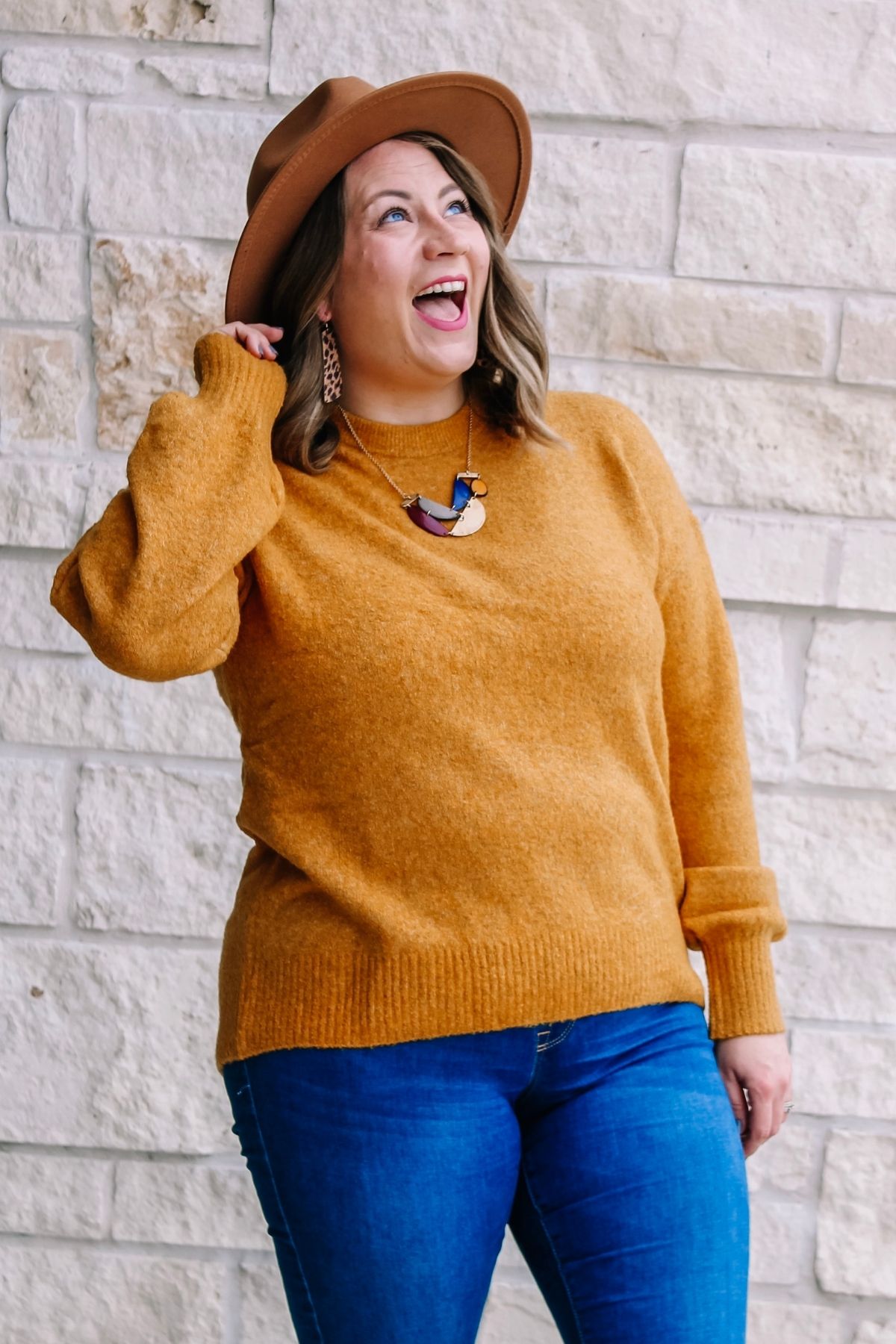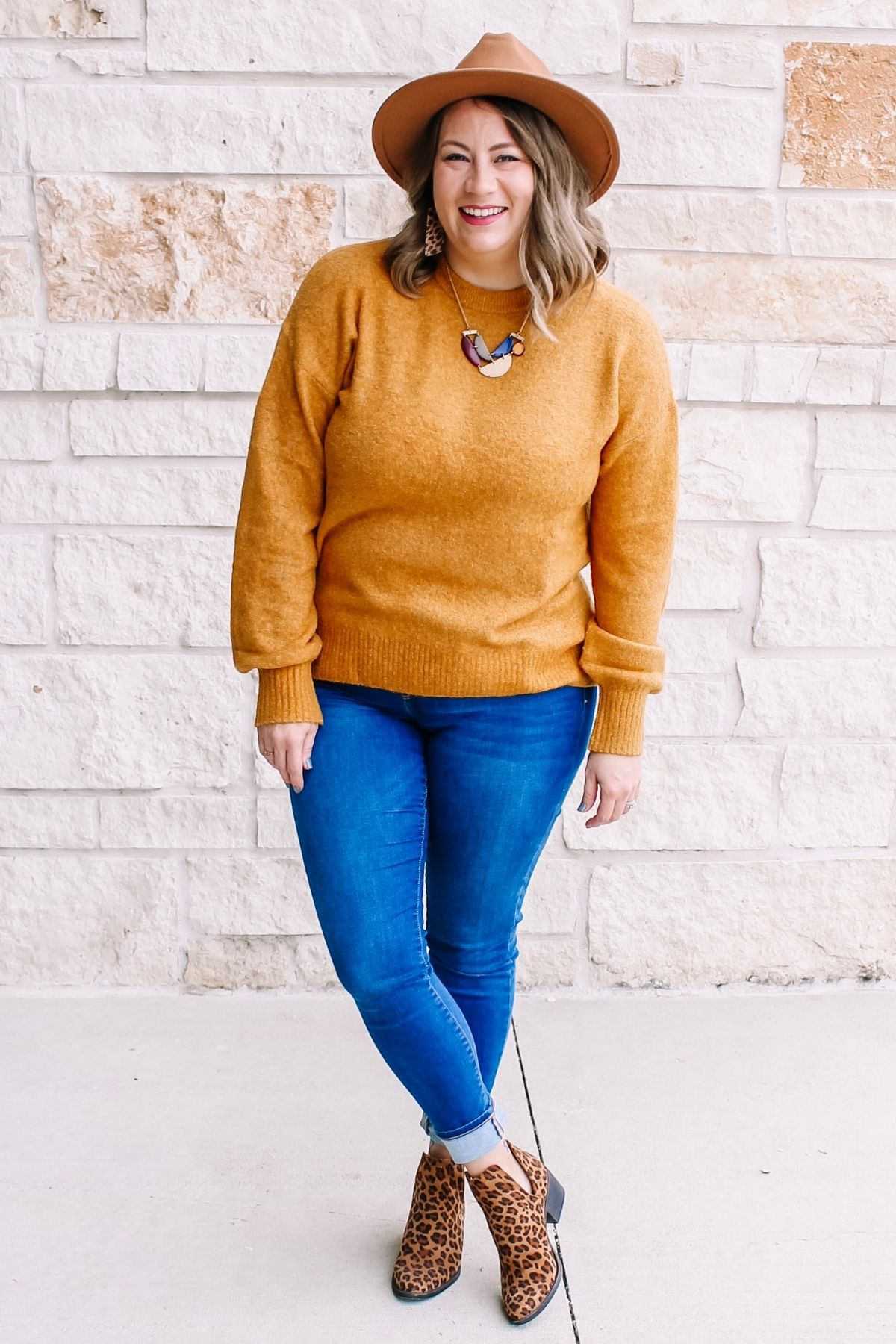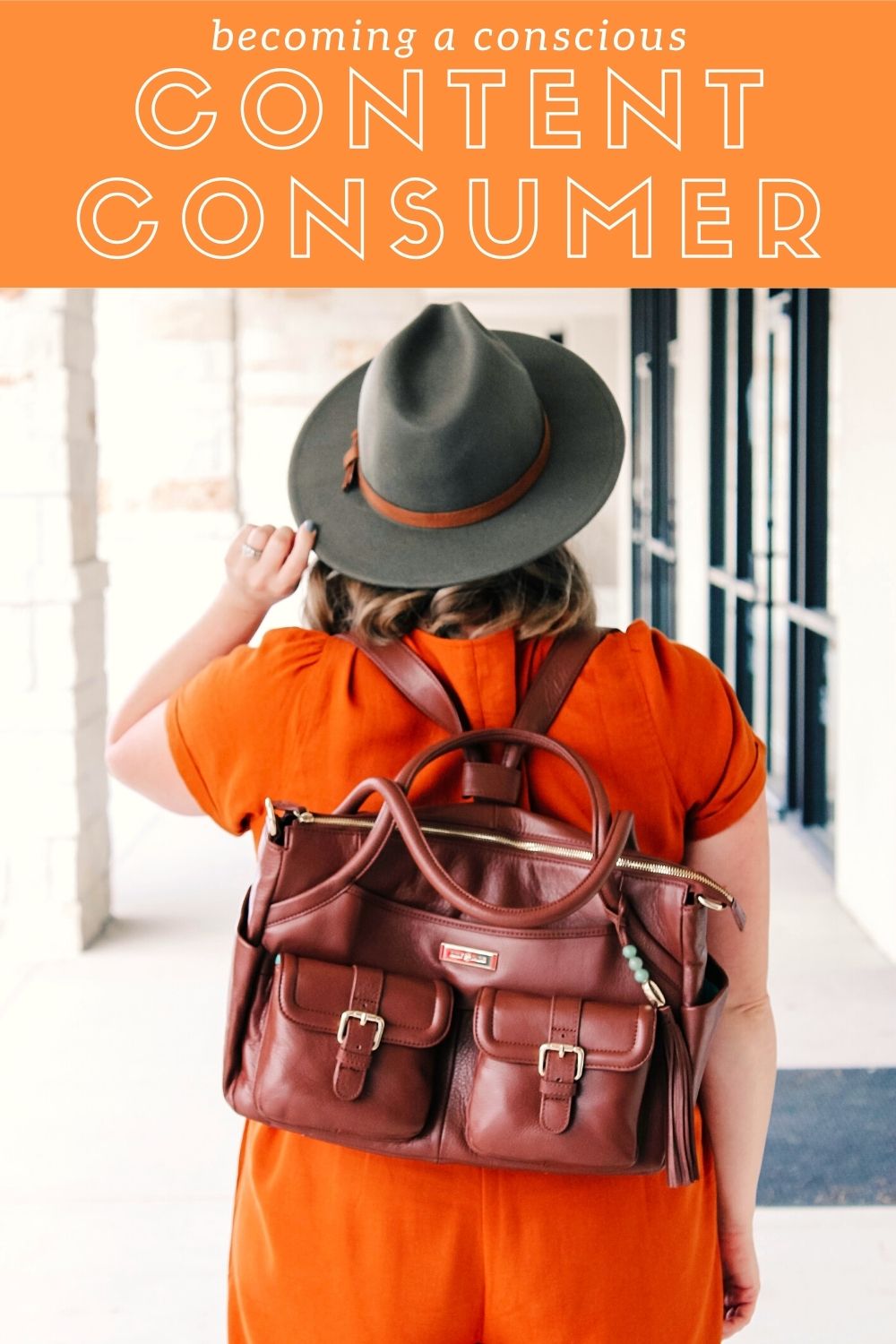Welcome back to part two of becoming a conscious content consumer! If you missed the first part, where I talked about how to be good content consumer for you, and you can find it here. Today I want to address how you can be a thoughtful content consumer for all the content creators out there!

As a reminder:
There are two types of people on social media (maybe even in the world?): content creators and content consumers. Content creators are people like (but not limited to) news outlets, reporters, authors, musicians, celebrities, entertainers, influencers, and entrepreneurs. A content creator is anyone who creates content that is designed to enrich, empower, educate, inspire, or encourage the person reading it. We are all, each and every one of us, content consumers.
I don’t feel like it is a stretch to say that content creators often feel frustrated with or slighted by content consumers. In many cases, creators spend hours researching, writing, filming, curating, photographing, and sharing content. These generally small snippets of information are really tiny pieces of our soul, what we believe in, and what we feel strongly about that we put out into the earth to leave a little trail behind us as we go. A lot of consumers don’t really understand that part of the process, what their relationship is to it, or how to properly respond to and support it. So that’s what I want to talk about today.
Becoming a Conscious Content Consumer – Part Two

Most content is F-R-E-E
That’s right, I said it. If you’re reading this blog post, you’re consuming FREE CONTENT. You didn’t pay anything to me in order to access it. I didn’t get paid a red cent to create it. But here we are, having a transaction where I’m creating something I’m not receiving compensation for that you’re consuming without providing payment for.
You’re welcome by the way.
Now of course, there is some paid content out there, like a subscription to a newspaper or magazine, purchasing an album on iTunes, or becoming a Patreon. But 99% of the content that you’re consuming has likely been created without any compensation provided on your part.
(I say “on your part” because yes, brands do compensate content creators for creating content specifically that highlights that brand or it’s products. But you, as the consumer, are still getting the content served up to you, fo’ free.)
So, how can you balance the scale a little bit? I have good news for you – it is super, super easy. All content creators ask you to do in exchange for all of this free content that you have chosen to participate in, is engage with it. And the good news is that it is stupid easy and FREE to engage with content.

Properly Engaging with Content
The number one way that you can support your favorite content creators is to engage with their content. How to engage will ultimately depend on the platform on which they have shared it (and how that platform’s algorithm is currently operating… but that is a whole different blog post) so I’ll share the most up to date info I have as of publishing this post for each one!
Blog Posts: Every time you read a blog post, there are a few easy things you should do to help the creator out. First of all, consider pinning it to your Pinterest account. Pinterest is quickly becoming the next Google when it comes to a search engine and having your blog post pinned just gives it one more opportunity for someone to find it by searching for a specific topic on Pinterest.
If you don’t have Pinterest, share it on your Facebook account or Twitter or just text it to a friend you think will enjoy it. It doesn’t have to be fancy or sophisticated!
After that, if the post stirred up something in you in response, like a question to explain something further or a link to an item, then leave a comment on the post! Years ago, comments were currency and we still love getting them!
Finally, while you are on their website, click around to a few other pages, read a different blog post, or search for a topic you think they’ve covered. These types of action increase what is called Search Engine Optimization (or SEO) and show search engines that not only is the original content valuable, but that the website has more to offer and keeps people on their site. This helps our ranking when you search for something on Google – the longer people spend on our sites the higher up in the search ranking we are likely to go.
You can also apply these suggestions to news articles that you found helpful or informative.

Social Media: Social media is it’s own universe now. It used to operate hand in hand with blogs and websites and now for the most part social media serves as the larger part of a content creator’s brand while their blog or website is more of a resource where you can send content consumers when they want more of what you’re offering through social media.
Each social media platform has its own rules and requirements, and to make things even easier, each platform’s rules are constantly changing and are completely unknown by the general public. It makes it really easy to know how to engage on each one, so here is a pretty basic guide for the most popular ones (minus TikTok & SnapChat, because I just refuse to participate with either one of those.)
- Twitter
- DOs: The easiest way to engage and help out a content creator is to “like” or “heart” their tweet and re-tweet it. You can also reply to it if you want to add to the conversation.
- DONTs: Don’t argue with people on Twitter. It will be the biggest waste of your time and you’re not going to change anyone’s point of view
- in a 240-character argument.
- MORE? If a tweet strikes your funny bone or is particularly poignant, take a screenshot of it and share it on a more visual social media channel like Instagram or Pinterest.
- Pinterest
- DOs: Pinterest consists of original pins (pins directly from the website) and repins (pinning a pin that already exists). We count on those for our content to go out to the general public and be seen by more people. We also track how many times it is viewed (which means expanded to be enlarged) and how many clicks it gets. So before you just repin something and move on, consider visiting the website.
- DONTs: Don’t pin something from an incorrect source. If you are repinning something, check the link to make sure it goes to the correct website. If you are pinning a specific article from a round up (like a group of recipes), do your best to pin from the original website and not the one with the round up.
- MORE? If you’ve made or created something that you’ve pinned, go back and leave a comment on it and share your feedback on it!
- Facebook
- DOs: Facebook loves to see community engagement, which means that they will show a post to more people when there is a conversation happening in the comments. They also love it when people use the reaction tools, so instead of just liking it, take the extra half a second and leave a heart instead. Then leave a comment – a meaningful comment!
- DONTs: Don’t interact with content that you don’t agree with or that doesn’t resonate with you. For starters, you are giving this person who doesn’t align with you engagement, and that is probably the last thing you want to do, because it means the post will just be seen by more people. Second, it is a waste of your time. See again the Twitter don’t section.
- MORE? If you really love a post or thing something is funny or cute or useful or helpful, share the post with your followers! Sharing it tells Facebook that the content is valuable and they will show it to more people if you share it.
- Instagram
- DOs: When you see a post you like, there are four things you can do to engage with it.
- Save It: Instagram LOVES it when you save content. By saving it, you are telling Instagram that this is valuable to you and that you will come back later to view it again. You can save a post by clicking on the little bookmark icon in the bottom right corner of the photo.
- Leave a Comment: Believe it or not, comments are absolutely currency in IG-land, for both the creator and any potential brand partnerships. We love conversing with you guys in the comments and getting to know you there. Don’t be a lurker and don’t be afraid to leave a comment!
- Double Tap: Giving a picture a heart used to be our main goal, but Instagram has lowered the importance of those in favor of the Save feature. Still, that doesn’t mean you shouldn’t like it too! Takes approximately one-half of a second to give it a heart!
- Share It: If you tap on that little paper airplane icon underneath a photo, you can do one of two things: send this post to a friend OR share it to your IG stories. These are both immensely helpful because it is a free way for our content to be served up to a new audience and potentially reach new followers.
- IG Stories: There are also specific ways to engage with IG stories! When you see a story with a poll, vote on it. A question box? Drop something in there. A quiz box? Take it! If nothing else, swipe up on a link, send a quick reaction (by swiping up and tapping an emoji), or send a comment!
- DONTs: Don’t be a lurker. Instagram is a lot of fun and can be a great place to foster a relationship but you gotta meet us halfway! Join in the conversation! That being said, don’t be a troll either. The easiest thing to do if someone says something you fundamentally disagree on, unfollow them. Don’t waste your time leaving a hateful comment. Also, IG is not an airport, no need to announce your departure.
- MORE?: For most of us, Instagram is the first thing that a brand will look at when determining whether or not to work with us, so it is the one we invest most of our time in. We really appreciate it more than anything when you are thoughtful, supportive, and loving on there, especially on our branded or sponsored content. So thanks in advance for always showing the love on those posts!
- DOs: When you see a post you like, there are four things you can do to engage with it.

More Boundaries: Yes, I talked about boundaries in the first post, but those were really boundaries for you to set on how much content you’re consuming, how often, and from whom. These boundaries are a little bit different. Like I’ve mentioned, as a content consumer, most of what you are taking in is free for you. That means it does leave a little responsibility on your part to react to it in the appropriate way when it is something you do not agree with or do not understand.
Another concept that I want you to consider is that when a creator has shared something on one of their platforms, they have opened up their home in a manner and invited you in to their space. Whether that is their physical home, their closet, their mind, or their heart, every bit of what we create is a part of us that we are freely sharing with you. Just because we’ve decided to do that doesn’t mean that you can come in and stomp all over it with your opinions and feedback.
One of the most common grievances of this is when an unwanted opinion is given. Sometimes creators will specifically ask for your opinion on something and in that case, go for it. They’ve opened that door and invited you to step on through it. But in other cases, when it is not asked for but given anyways, it can come across as pushy and rude, especially without the benefit of tone of voice.
For example, when someone shares a space in their home they have recently made over or redecorated, just to share it, and you leave a comment disagreeing with something they’ve done or a choice they’ve made, that is the equivalent you walking in, taking one quick look around, and saying “Damn that is ugly!” and then leaving. While you don’t have to agree with everything all the time, there are definitely more constructive ways to approach situations like this. “Thank you for sharing your home with us! I’d love to hear more about why you chose XYZ and what are some other options you passed on!” Remember that saying “you’ll catch more flies with honey than vinegar”? This applies here! You’re more likely to get a thoughtful response than if you just insult their choice and keep on scrolling.
I guess my main point here is to really and truly think of how your comment would come across if it is being said with your voice, to this person, in person, while standing next to them. The loss of tone in text transmissions can do a lot to degrade a conversation, so really put some constructive thought into things you say online! Maybe even wait 24 hours before you actually say it. Sometimes we think something in the moment that we would never actually say, but the absence of a human connection makes us say it without really giving consideration to how it sounds to the other person.
In the interest of your time and mine, I’m going to call this one done, but might come back with a part three as feedback and questions roll in! Don’t forget to leave a comment!, and let me know your thoughts on all this! How are you going to improve as a content consumer after these two posts?
Also – I would really love it if you would share this post with the image below on your Pinterest board!


Excellent read. Just one thought that came to mind.. I used to be a “lurker” (also thinking about the Friends episode where Phoebe calls a lady a lurker at the casino… :)). But then learned to comment to help my favorite content creators out, but I’m terrified that they’ll think I’m a creeper/stalker etc for commenting. I’ll take your work for it and keep commenting. Just wanted to throw it out there.